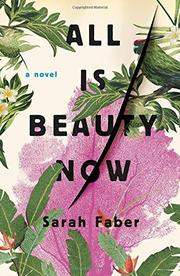Without a Country Ayşe Kulin (2016)
Translated from the Turkish by Kenneth Dakan (2018)
In the nineteenth century and the early twentieth century, German universities, funded by the government there, were highly esteemed. American students trekked off to Germany to pursue graduate degrees in both the humanities and the sciences. German research publications influenced scholars around the world. However, when Nazi oppression of Jews stepped up in the 1930s, many of the faculty in German universities and medical schools—Jews and those critical of the Nazi regime—were forced to emigrate. Although I knew these historical facts, until I read Without a Country, I had no idea that dozens of German scholars took positions in Turkey, which was building up its educational system in the years just prior to World War II.
In Without a Country, Ayşe Kulin tells the story of one German Jewish scholar and his family who leave everything behind in Frankfurt so that he can take a position in Istanbul in 1933. According to an author’s note, an actual German pathologist inspired the fictional character of Gerhard Schliemann, who lands a job in Turkey and negotiates with the Turkish government to find job placements in Istanbul and Ankara for many other German academics and physicians. Schliemann’s descendants grow up in Turkey and navigate the paths of nationality and religion in varied ways. The Schliemann family and their friends evolve not only as German/Turkish/American but also as Jewish/Muslim/Christian, some practicing, most not.
That’s the basic premise of this intriguing family saga that provides, in three sections, scenes from the 1930s/1940s, the 1960s, and then the present day. Most of the action is set against the magnificent scenery of Turkey, especially the Bosporus Strait in Istanbul, city of ancient churches, mosques, and palaces. Political movements and political unrest play out in the background; I fact-checked a few of the historical references and found them to be accurate. In a sense, novelist Kulin is telling the story of modern Turkey through her fiction.
In the first section of the book readers get brief scenes depicting significant incidents in the lives of the Schliemann family. The details of their escape from Nazi Germany to a welcoming Turkey are absorbing, and the individual characters come to life. Even in the second section, Gerhard and his wife, Elsa, remain in the story as their children and grandchildren take center stage. I was disappointed, however, in the final section of the book, which shifts from third-person narration to first-person, with the narrator being Esra, the great-granddaughter of Gerhard and Elsa. The multi-generational family chronicle is diluted as readers hear little or nothing of the fates of beloved characters from previous decades. The novel would have been much stronger if the contemporary section had been expanded considerably.
Still, I recommend Without a Country for its depiction of people in a multicultural society in an area of the world that has seen much discord. As Gerhard was “without a country” when he left Germany in the 1930s, so his great-granddaughter Esra will be “without a country” if she leaves Turkey in the present day. Kulin has a keen awareness of the sacrifices, compromises, and heroism of families caught in the tumult of history.























